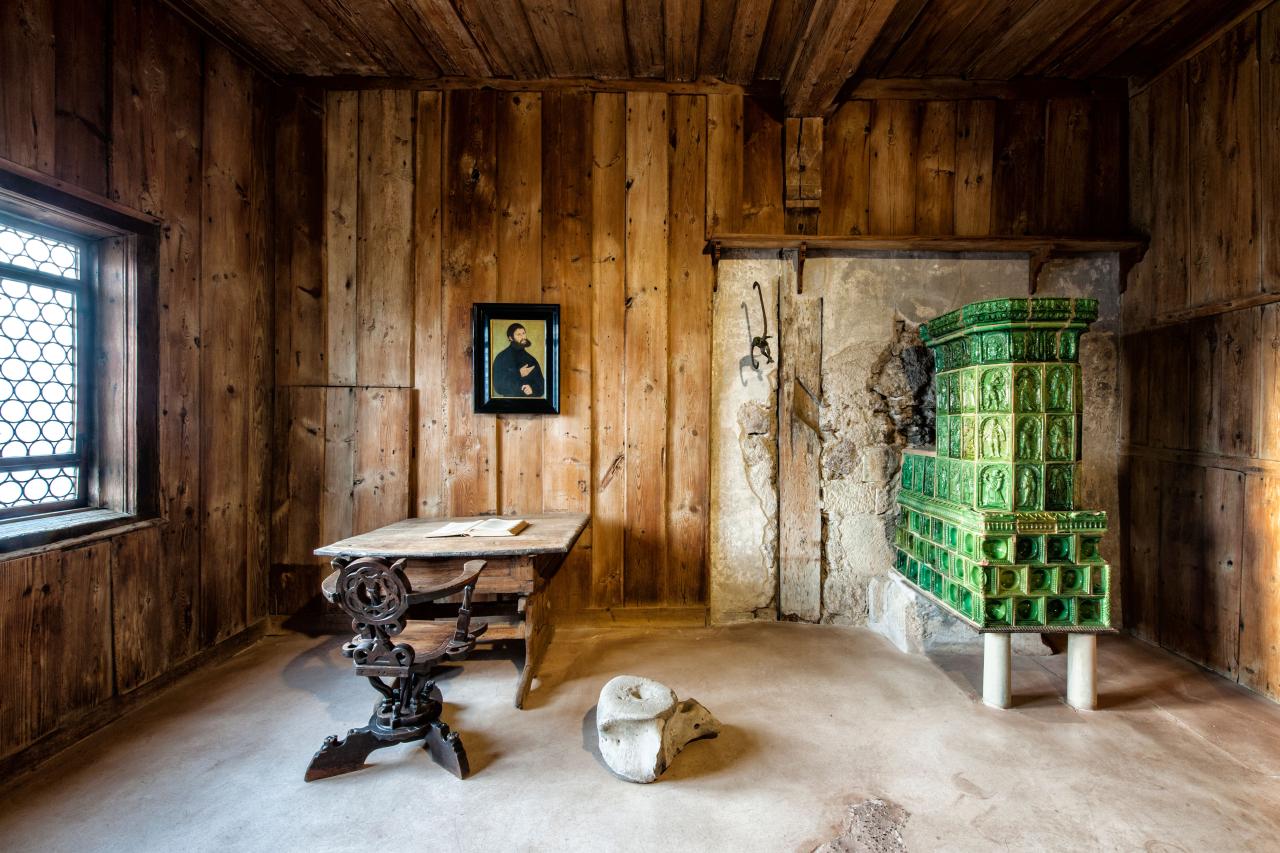Visit the state capital Erfurt and go on a virtual discovery tour through Thuringia.
A fascinating history
Wartburg Castle
The early bird catches the worm. In this case, the worm is a spectacular sight. If you manage to climb up to Wartburg Castle really early in the day, you'll see the castle bathed in the morning sun. The windows reflect the light like glittering diamonds. However, seeing the sun set behind the castle is also an amazing sight; the show is best enjoyed from the sconce – you should definitely have your mobile phone camera ready for action!
Excellent prospects
Climb the southern tower for views across the castle grounds and the Thuringian Forest. You have to climb the tower via a small wooden, covered staircase on the outside; a few more steps on the inside and then you can enjoy the views across the inner bailey. As far as the eye can see, the green of the surrounding Thuringian Forest. Maybe you've spotted the 6.5-metre tall golden "M" on the forest slope? It was erected there in honour of the Grand Duchess Maria Pavlovna of Russia, who came to Thuringia after her marriage in 1805.
Talking about banqueting halls: Wartburg Castle also has one, of course. It's a must-see. It is magnificently furnished in a regal shade of red. Top-class concerts are performed in these four walls. The hall was already inspirational in the 19th century; Ludwig II of Bavaria, a.k.a. the "Fairy Tale King", had a copy of this banqueting hall built at Neuschwanstein Castle.
Where words made world history
However, back to the beginning! I bet you'll feel the same: As soon as I crossed the drawbridge, I felt like I had travelled back in time to a few centuries ago. Poets, writers, princesses – all of them have stood where I stood, lived here and did great things in this place. The cold walls literally seem to whisper these stories; you can almost hear them.
One of these stories is particularly omnipresent and well-known: A very special gentleman ensured that his fellow citizens were no longer kept in the dark. During the 300 days he stayed here, he was known as the "Junker Jörg". I'm talking about Martin Luther, of course. With his translation of the Bible, he gave the common people access to religious teachings independent of the Church. Luther's words not only changed the history of the world in the 16th century; his neologisms also made the German language a little bit richer. "Lockvogel", "Lästermaul", "Lückenbüßer" and "Rotzlöffel" are just some of his creations that are still in use to this day.
Battle with the Devil
My favourite moment was visiting the "Lutherstube", his rooms. I'd already heard the story of the ink spot as a child: Whilst Luther was beavering away at his translation, the Devil himself apparently put in an appearance. Luther threw his inkwell at him, which left an ink spot on the wall. No-one knows whether the ink spot really was the result of a fight with the Devil or simply a bit of soot from the fireplace. It doesn't matter to true Luther fans – who merrily scraped the supposed remains of the battle between Good and Evil off the wall. For many years, it was laboriously reinstated at regular intervals. It is no longer there now, and has therefore become a legend.
Cover picture: ©Dominik Ketz, Regionalverbund Thüringer Wald e.V.
Accessibility
Did you like this story?
You might also be interested in ...




















